Magnolia Lawn (Part 2): PDS/USN
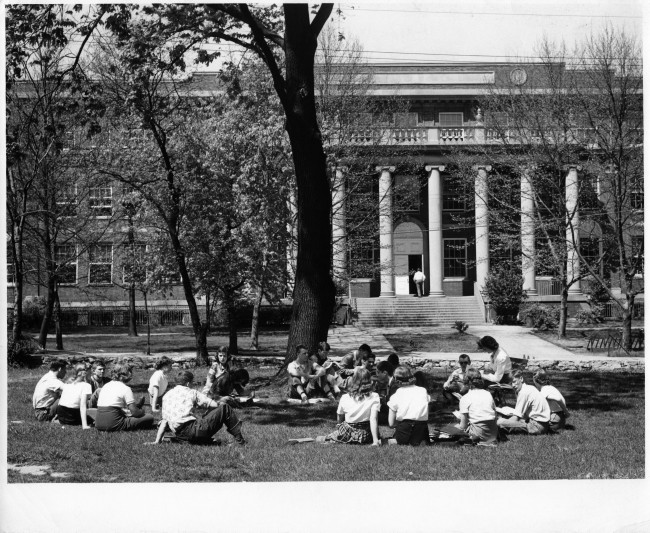
Peabody Green
In my previous post, I looked into the origins of what is now called “Magnolia Lawn” and tried to track down the histories of some of the oldest trees there. At the time I wrote that post, I was wondering about the origin of the name “Magnolia Lawn”. Since that time, I’ve had the opportunity to do a little more research into the subject. Connie Culpepper, the Communications Director of the University School of Nashville (USN) told me that when she started working at the school in the 1970’s and for years afterwards, they always called it Peabody Green or just “the Green”. Lee Greenberg of Vanderbilt’s Facilities information Services checked and found that both the name “Magnolia Lawn” and “Peabody Esplanade” started appearing in their records in 1989. Judson Newbern, recently retired Deputy Vice Chancellor for Facilities and Environmental Affairs who worked with Campus Planning and Construction for 30 years, said that he suspected the name Magnolia Lawn was created during a period when Vanderbilt was renovating buildings and overhauling facilities on Peabody Campus around that time. This information confirmed my suspicion that “Magnolia Lawn” was not the name originally applied to the space, and provided information that “Peabody Green” was a much earlier name.
I also ran across an article [1] about the neighborhood before the construction of Peabody College in 1914. According to that article, “Edgehill”, the house for which Edgehill Avenue was named, stood on the site of what is now Magnolia Lawn. It was part of a 75 acre estate that included the current locations of USN and Scarritt-Bennett. So it appears that Magnolia Lawn’s pre-Peabody history diverges from that of Roger Williams University (see a previous blog post for more on Roger Williams).
Peabody Demonstration School
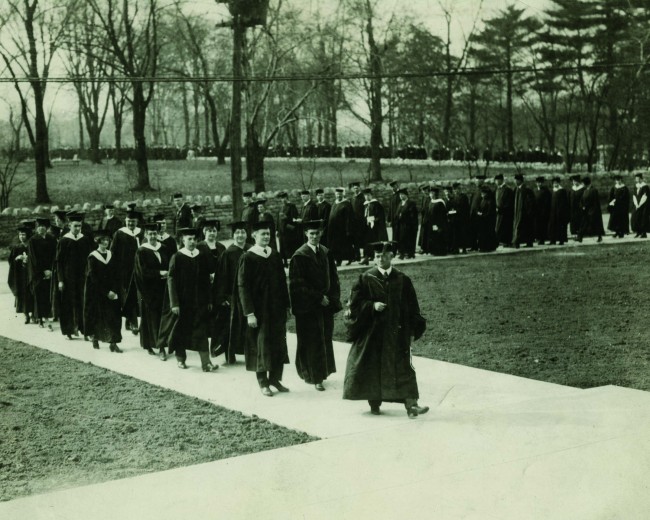
Because my last post was so lengthy, I decided to save talking about the special relationship between the Peabody Demonstration School (PDS; now USN) and Magnolia Lawn. That was probably a good thing, because in the intervening time, I’ve acquired more interesting material on the subject.
Dr. Thomas Alexander led the effort to create a demonstration school at the newly constructed campus of the George Peabody College for Teachers, which opened in 1914. The following year, “the Dem School” opened in the basement of the new Jesup Psychological Laboratory. For ten years, the school met there and students endured “Keep off the Grass” signs, but at last in 1925, the school got its own building, located on the opposite end of the Peabody campus from the imposing Social Religious Building (now Wyatt Center). [2] The lawn across the street from the school quickly became a popular place for students to hang out and for teachers to take their classes when the weather was nice.
Julie Reichman summarized the feelings of students who attended PDS in the late 1960’s: “Other experiences contributed to a sense of freedom and community. Among the most vivid recollections shared were scenes of gatherings on Mangolia Lawn at Peabody College, where many spent lazy lunches and hurried breaks, and where fondly remembered faculty convened outdoor classes on balmy Nashville afternoons. … Magnolia Lawn was so often frequented by PDS students that the squirrels inhabiting its numerous trees became acclimated to our meetings and nearly always joined us and delighted in a stolen morsel from our lunch sacks.” [3]
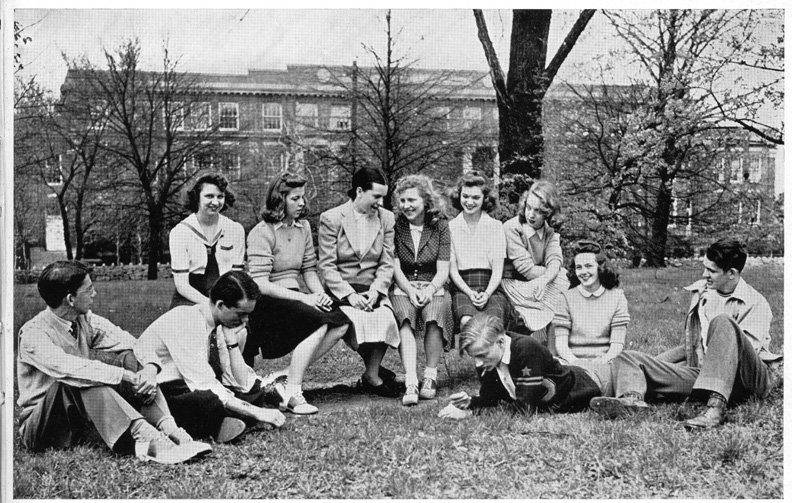
Jenny Winston, USN Archivist, describes the relationship between USN and the lawn:
“Peabody Green/Magnolia Lawn, and the stone walls surrounding it, are notable icons in the 100-year history of our school. When University School was Peabody Demonstration School, and a part of Peabody College for Teachers, students from the teachers’ college would traverse the Green to participate in the instruction and teaching observation going on in the Dem School building. Through the decades, Magnolia Lawn has served as a resting place for students between classes, as an open space for yearbook photo opportunities, a space to hang out with friends, throw a frisbee, eat lunch. For years, “The Wall” along Edgehill Avenue provided a popular hang-out spot for students (before loitering on the wall was prohibited in the 1980s.) Ask any PDS/USN alum, and they will probably have a memory from the lawn. Most recently, we’ve been learning about the rich history of the trees on Vanderbilt’s campus, some of which live on Magnolia Lawn and can be seen as background players in multiple photographs depicting student life at USN. Even today, USN commencement is celebrated each May in a truly memorable ceremony on the lawn.”

The Wall
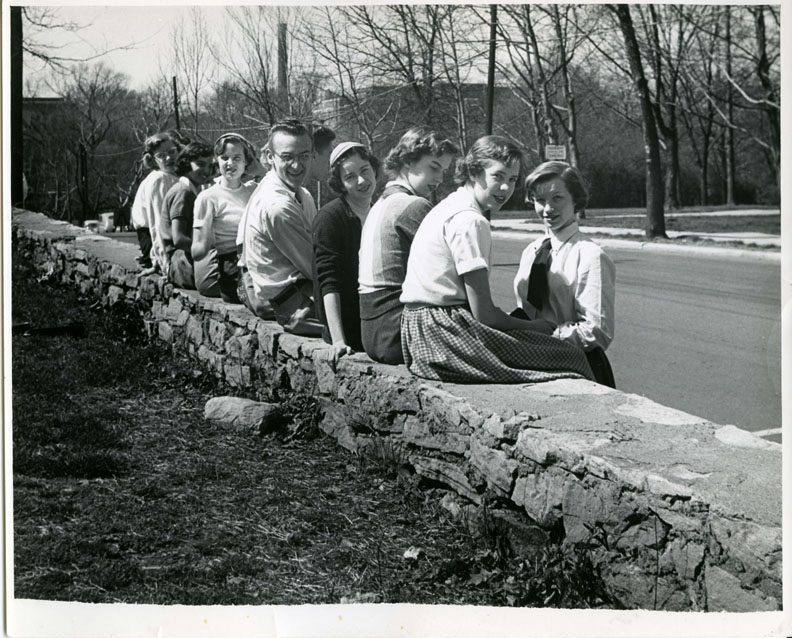
One of the popular features of Peabody Green was “the Wall” – a retaining wall directly across the street from the front door of the school. In the early days of Peabody, the Wall had crenelations (see the photo from 1942 above). However, by the 1950’s the wall had been renovated (see fresh-looking mortar in the photo above) and the top surface was smooth, making it possible for groups of students to sit on it during lunch or when hanging out in general between classes.

One bit of folklore that surfaced during my research was that students had been banned from sitting on the Wall during the 1980’s. I asked Steve Robins, the current Head of the USN high school, whether he knew the backstory of this legend. He could not confirm the details, since it was before his time at the school, but he believed that the issue was related to smoking.
The societal changes of the 1960’s and 70’s had their effect on PDS, just as they did on the rest of the nation. Ann Meador Shayne of the class of 1981 described her impression after moving to the school in 1973 from a conservative school in Birmingham, Alabama: “The high school students draped along the wall across Edgehill looked like the hippies on Dragnet …” [4].The period was also a tumultuous one for the school itself. In 1974, Peabody College made the decision to close the Demonstration School, and a group of parents purchased the school so that it could continue to operate as the University School of Nashville [5]. Harvey Sperling, the Director of USN from 1979 to 1990, provided me with some perspective about that period. At that time, some students saw smoking as a kind of symbol of their freedom as individuals. With the recent break with Peabody, the Wall became a sort of “foreign territory” where a few USN students felt they could smoke with impunity – not a good practice in Mr. Sperling’s opinion. He viewed it as a major health issue and a public relations problem in the community. The practice of smoking on the Wall was finally quashed one day when the police stopped and cited several students for underage smoking on private property. Mr. Sperling doesn’t think that anyone actually called the police. Perhaps they were just fed up with the display of intransigence. In any case, that ended the problem, and since then, USN students have been able to enjoy sitting on the wall in a smokefree environment.
Learning on the Lawn
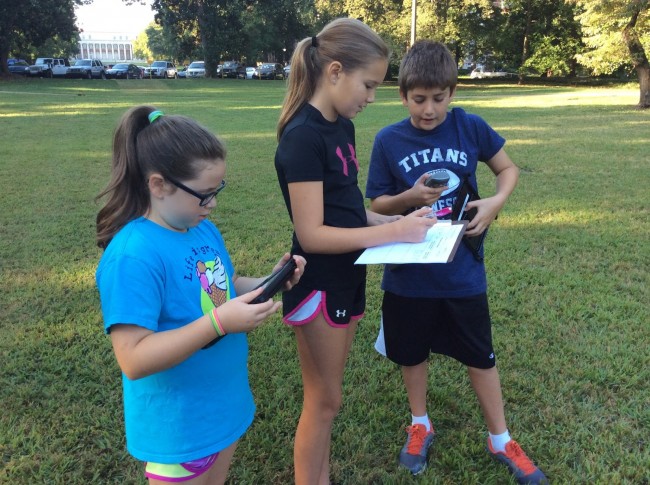
Besides serving as a place to hang out and relax, Magnolia Lawn has also been a place where kids and teachers go to learn. I recently had the pleasure to work with Connie Fink, USN 5th grade teacher who was developing a project to give her students an opportunity to explore GIS mapping. With Jenny Winston’s help, Connie acquired a collection of historical photos taken on Magnolia Lawn from the 1930’s through the 1990’s. The students were asked to try to locate the spot where their photo was taken and then to recreate it. Particular trees and their locations in the photos were often key clues.
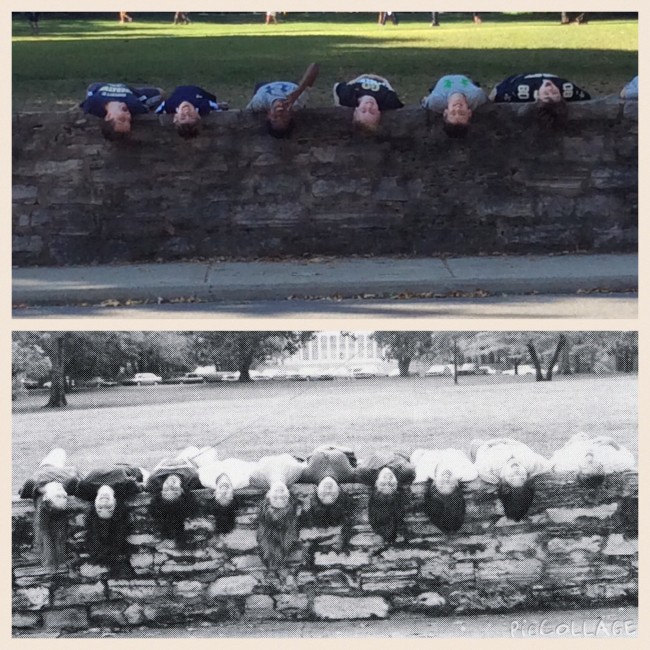
The students also used a GPS receiver to record the geocoordinates where the photo was taken. The end product was a map with location pins,before/after photos, and text describing the changes they had documented.
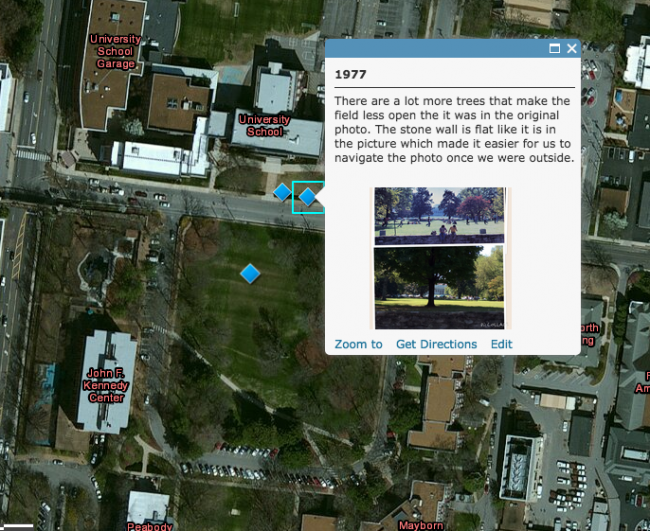
As Jenny said:
“Using old photographs of Magnolia Lawn through the decades as springboards for this project provided a great opportunity to introduce students to the essential skill of ‘close reading’ and analysis of primary sources. Recreating these photographs using elements of geography and examining the existence (or non-existence) of notable landmarks, was such a great way to get students to really experience that connection between past and present – placing themselves on the timeline of history. It was really fun to stand out on the lawn with the students and observe as they tried to physically arrange themselves in the precise spot the picture was taken, photographs and GIS devices in hand. Through Ms. Fink’s project, these fifth graders gained not only skills in primary source analysis, GIS technology, and elements of geography, but also, hopefully, one of their very own memories on Magnolia Lawn.”
You can read the full details of the project on Connie’s blog “Learning by Leaps & Bounds“.
Graduation
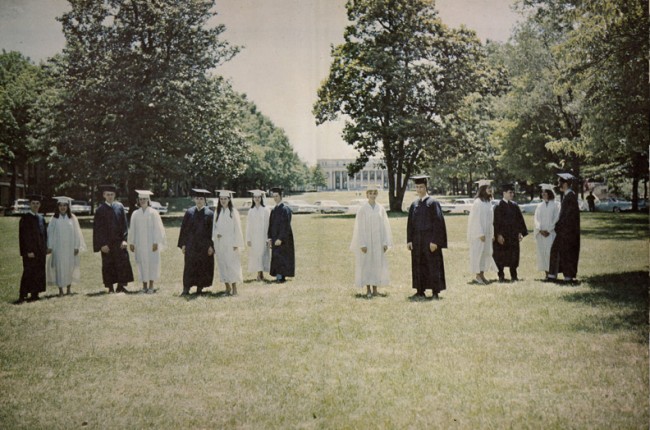
No description of the special bond between USN and Magnolia Lawn would be compete without including graduation. At various times since at least the 1960’s, PDS/USN graduations have been held on the lawn. In recent years, the tent that is set up for Vanderbilt’s Peabody College commencement is left in place on the lawn so that USN’s graduation can take place there a few weeks later.
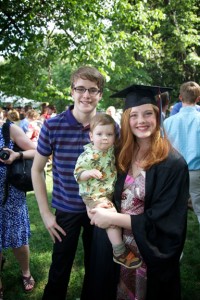
On a personal note, I have my own fond memories of celebrating two daughters’ USN graduations in the shade of the hundred year-old trees of “Peabody Green”.
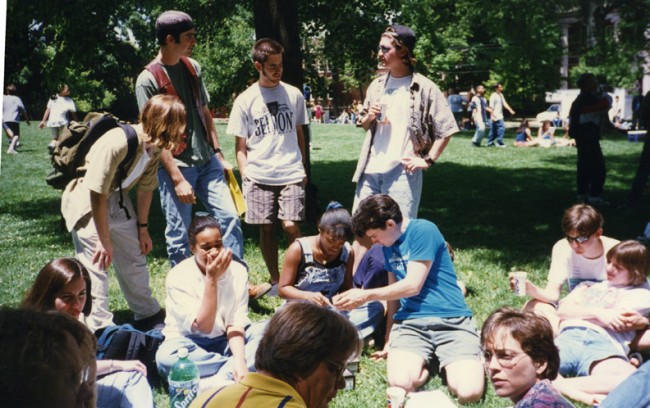
Long live the happy partnership of University School and Magnolia Lawn!
Acknowledgements
Thanks to Jenny Winston for her help in locating most of the photographs used in this post and for providing quotes. Thanks to Connie Fink for sharing material about her class’ project, and for images from her blog. Thanks to Connie Culpepper and Harvey Sperling for their information and input, and to all of the other sources who provided information quoted in the post.

Steve Baskauf is a senior lecturer in the Biological Sciences Department at Vanderbilt University. He serves as the communications coordinator for the Vanderbilt Arboretum and can be contacted at steve.baskauf@vanderbilt.edu. Posted 2015 November 13.
[1] Ewing, David. “Before We Arrived”. 2000 Edgehill. University School of Nashville, 2015. http://www.usn.org/ftpimages/392/download/download_1174697.pdf
[2] “PDS (and USN) Forever” and “The Legend Comes True”, 2000 Edgehill. University School of Nashville, 2015 http://www.usn.org/ftpimages/392/download/download_1345899.pdf
[3] Reichman, Julie. “The Penultimate PDS”. The Same River Twice: Reminiscences from a Century of Learning at Peabody Demonstration School – University School of Nashville 1915-2015. University School of Nashville, Connie Culpepper, ed. 2014. p. 84.
[4] Shayne, Ann Meador. “Weird or Not Weird?”. The Same River Twice. p. 104.
[5] Vise, David. “Excerpts from Saving PDS“, 2000 Edgehill. University School of Nashville, 2015. http://www.usn.org/ftpimages/392/download/download_1346072.pdf